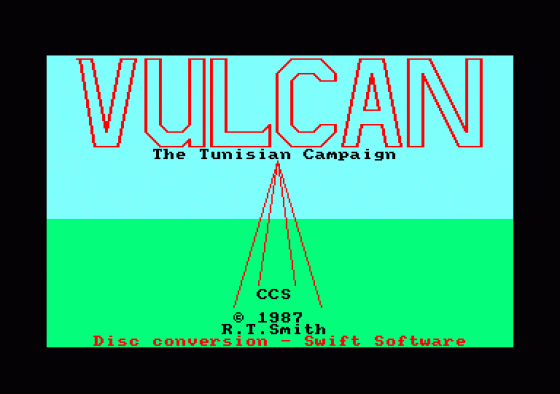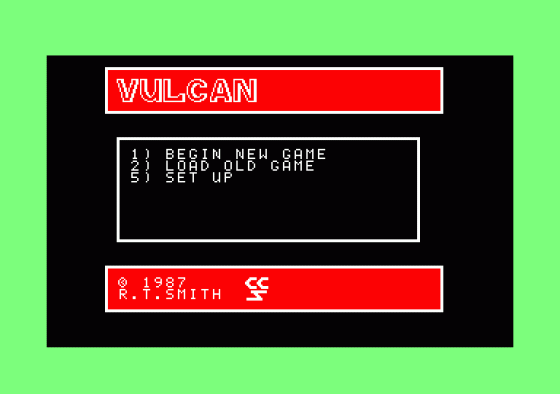
Computer Gamer
 1st July 1987
1st July 1987
Categories: Review: Software
Publisher: Cases Computer Simulations
Machine: Amstrad CPC464
Published in Computer Gamer #27
Vulcan: The Tunisian Campaign
No, it's not Star Trek on the Amstrad at last, but the final operation of the African campaign in World War Two called Vulcan.
The prolific and knowledgable R. T. Smith has, yet again, come up with a wargame of incredible accuracy, which is also clear and easy to play.
A previous game by the same author, Desert Rats, detailed the start of the conflict between Montgomery and Rommel. Vulcan is the final showdown and involves the destruction of the Afrika Korps and the taking of Tunis.

The game has the usual instruction book with 32 pages - half of them given over to the historical background with pictures to the operation. This kind of detail helps you to understand the why, which is as important as the how.
The how instructions are very clear and easy to understand - after the required three readings, and all the reference tables and lists are easy to find.
The game is on a fairly large scale and uses a scrolling map of north Africa, rather than waste memory with a larger scale all at once map. A big map is provided in the form of a massive screen dump in the centre pages of the manual.

Units are represented by carefully chosen symbols with greater information on specific units being displayed elsewhere on the screen.
Graphics are in the Amstrad's sixteen-colour low-resolution mode. But, as the map is so finely detailed, nothing is lost by this and the full use of colour increases clarity.
A number of options are provided including five scenarios of different sections of the campaign ranging from short attacks, that last 25-45 minutes, to the whole biz, that could last up to sixteen hours!
The computer will play either side or two players can play instead. The computer plays a reasonably strong game as the Allies and battles valiantly as the Axis side. But the odds always seem weighted in favour of the side which actually won the individual conflicts. Playing the two player mode allows more freedom for mistakes and to pull off surprise attacks.
On the whole, this is an excellent game and an example to all programmers of strategy games as to how a game like this should be presented.



